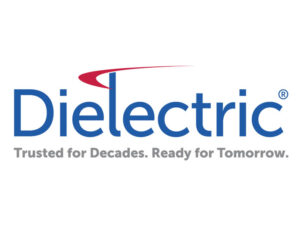In our previous Broadcast Dialogue article, we introduced readers to the concept of virtualized antenna modeling, and how the FCC’s allowance of directional FM antenna modeling through computational methods opened doors to a more efficient, economical, and accurate simulated modeling procedure for our customers in the United States.
This approval led to the recent availability of Dielectric’s Artificial Intelligence Optimization (AIO) procedure, which ensures the geometry for each antenna generates the broadcaster’s desired radiation patterns while maintaining FCC compliance. Dielectric’s use of High-Frequency Simulation Software (HFSS) helps to drive the computer simulation process for Dielectric’s AIO antenna modeling.
 Some of our earliest beneficiaries of this process are Canadian broadcasters – a very proud accomplishment for all of us at Dielectric. We have thus far shipped three antennas for two FM broadcasters in New Brunswick, Quebec, and Nova Scotia, all of which we hope to profile in future articles. These early AIO projects included two DCR-H ring antennas and one DCP-J cross-dipole panel antenna, and demonstrated how quickly we could design these antennas to each customer’s precise specifications.
Some of our earliest beneficiaries of this process are Canadian broadcasters – a very proud accomplishment for all of us at Dielectric. We have thus far shipped three antennas for two FM broadcasters in New Brunswick, Quebec, and Nova Scotia, all of which we hope to profile in future articles. These early AIO projects included two DCR-H ring antennas and one DCP-J cross-dipole panel antenna, and demonstrated how quickly we could design these antennas to each customer’s precise specifications.
What we found during the design process of these antennas is that the AIO procedure also adds value when used in combination with our sales proposal software. This means that when broadcasters come to us with a desired antenna pattern, specific tower size and orientation, our engineers can run simulations to get the exact pattern the customer will implement.
Historically, engineering would rely on our database of patterns and get a close approximation. We have found that the AIO procedure increases customers confidence in the final analysis and more customers are coming to us because of this new technology.
What’s Next for AIO
Our global sales manager, Cory Edwards, attended the recent Central Canada Broadcast Engineers (CCBE) Convention in Ontario to learn more about current trends and topics of interest when it comes to Canadian RF systems. Along with a strong interest in virtualized antenna modeling, the topic of manifold combining was a hot topic amongst engineers in attendance.
In the past, broadcasters have been limited when it comes to manifold combiner designs. Foremost, there traditionally needs to be a clear understanding of the channel allocation for the manifold combiner when designing the system. That clearly sets limitations on what a manufacturer can provide from a design standpoint, and how quickly the system can be built and shipped.
It also means that changes or additions to the design are at best challenging. The manifold portion of the spline is determined at final test. The expansion of the manifold is traditionally achieved by adding future stations with a constant impedance filter (CIF). The CIF approach also produces a large footprint and financial impacts, which are common drawbacks.
We have since tested how Dielectric’s AIO procedure can similarly accelerate the design and shipment process for manifold combiners. Specifically, we are using our optimizer to develop the foundation of the combiner for future expansion. We first add channels into the manifold combiner as specified by the customer and then develop the combiner’s phasing.
From there, we added open ports into the design to add future frequencies, which is something that simply was not possible before. Using our AIO procedure, we can confirm if anything changes on the output once new frequencies are added. This breakthrough will open opportunities for broadcasters and vertical real estate companies. In addition to offering future expansion, the new design provides the broadcaster with backup filters.
The AIO process first opened the door to solve manifold combiners at Dielectric. It subsequently opened a second door that allowed us to develop an expandable and reconfigurable design, which gives our customers more versatility than the standard CIF approach. The customer also receives improved electrical performance and a manifold combiner that is half the size of a CIF combiner.
We are proud to be on the forefront of AI and RF convergence with our AIO modeling procedure, and we are excited to bring more information to the industry on our latest groundbreaking developments with our emerging virtualized filter and combiner design procedures.
For more information, go to Dielectric.com.




